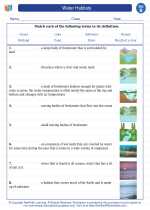What is Tectonic Activity?
Tectonic activity is the movement and deformation of the Earth's crust caused by the interaction of the tectonic plates. These plates are large, rigid slabs of the Earth's lithosphere that float on the semi-fluid asthenosphere below.
Tectonic Plates
The Earth's lithosphere is divided into several major and minor tectonic plates. The movement of these plates is driven by the heat generated from the Earth's core. There are different types of plate boundaries where tectonic activity occurs, including divergent boundaries, convergent boundaries, and transform boundaries.
Types of Tectonic Activity
1. Earthquakes: These are caused by the sudden release of energy along fault lines in the Earth's crust. The movement of tectonic plates can cause stress to build up, resulting in earthquakes when the stress is released.
2. Volcanic Activity: Volcanoes are often found at convergent and divergent plate boundaries. When tectonic plates collide or separate, magma can rise to the surface, leading to volcanic eruptions.
3. Mountain Building: The collision of tectonic plates can lead to the formation of mountain ranges. This process, known as orogeny, occurs at convergent plate boundaries.
Effects of Tectonic Activity
Tectonic activity can have significant effects on the Earth's surface and its inhabitants. Earthquakes and volcanic eruptions can cause destruction and loss of life. However, they also play a key role in shaping the Earth's landscape and creating new geological formations.
Studying Tectonic Activity
Geologists and seismologists study tectonic activity using various tools and techniques, including seismometers, GPS, and satellite imagery. By understanding tectonic activity, scientists can better predict and prepare for natural disasters and gain insights into the Earth's geological history.
[Tectonic Activity] Related Worksheets and Study Guides:
.◂Science Worksheets and Study Guides Second Grade. Water Habitats

 Activity Lesson
Activity Lesson
 Worksheet/Answer key
Worksheet/Answer key
 Worksheet/Answer key
Worksheet/Answer key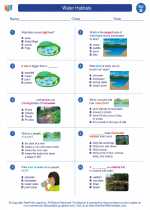
 Worksheet/Answer key
Worksheet/Answer key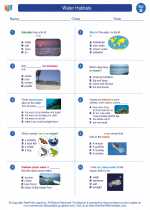
 Worksheet/Answer key
Worksheet/Answer key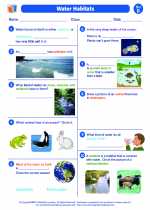
 Vocabulary/Answer key
Vocabulary/Answer key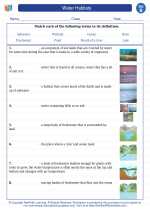
 Vocabulary/Answer key
Vocabulary/Answer key